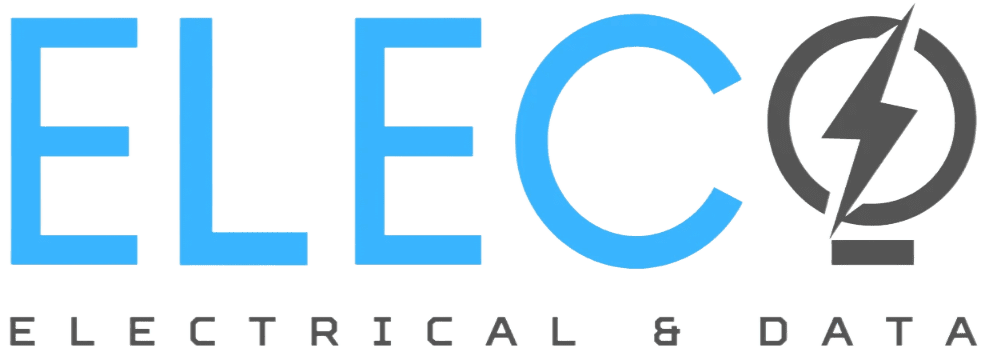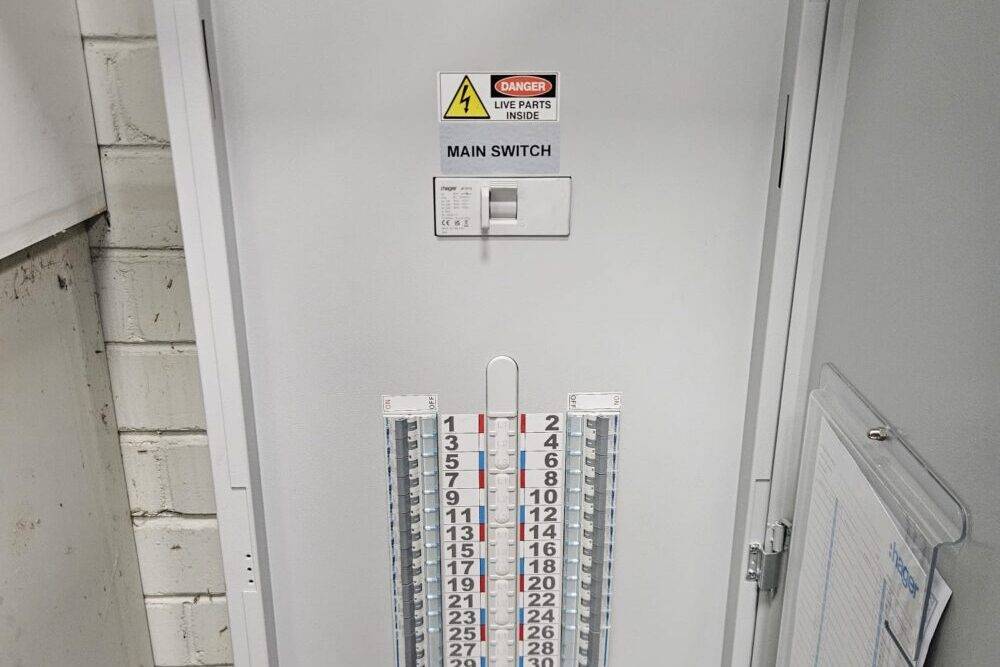Switchboard Upgrade – What Is It and When Do You Need One?
Your switchboard is the heartbeat of your home’s electrical system. If you’ve been noticing flickering lights, tripping safety switches, or signs of wear and tear on your switchboard box, you might be due for a switchboard upgrade.
But what is a switchboard upgrade exactly? When is it necessary? And what’s involved in upgrading your electrical switchboard in Melbourne — or anywhere in Australia?
Whether you own a period home with an old fuse box or are planning a major home renovation, this in-depth guide covers everything you need to know about electrical switchboard upgrades in 2025 — from compliance and safety concerns to installation, costs, and frequently asked questions.
What Is a Switchboard?
A switchboard (sometimes called a power switch board or distribution board) is an essential part of your home’s electrical infrastructure. It routes electricity from the main power supply to various circuits throughout your home. Each circuit is protected by fuses or circuit breakers, and modern switchboards also include RCDs (residual current devices) for added protection.
In short, your home switchboard ensures that power is delivered safely and efficiently to appliances, lighting, and power points — and shuts off if something goes wrong.
Why Are Older Switchboards a Problem?
Homes built before the 1990s often feature old switchboards that weren’t designed to handle today’s electrical loads. Back then, a couple of appliances and a few lights were sufficient. Fast forward to 2025 — with induction cooktops, home offices, ducted air con, and EV chargers — and many domestic switchboards in Australia are struggling.
Signs of an Outdated or Unsafe Switchboard:
- Frequent tripping or blown fuses
- Buzzing noises or a burning smell
- Lack of safety switches (RCDs)
- Ceramic fuses instead of modern breakers
- Scorch marks or melted cables
- Flickering lights when large appliances are used
- Limited circuit availability
Worse still, some old electrical switchboards contain asbestos — commonly used as a backing panel until the 1980s. Asbestos switchboards pose serious health and safety risks and require licensed removal during any switchboard replacement.
What Is a Switchboard Upgrade?
A switchboard upgrade involves replacing your existing electrical switchboard with a new unit that meets modern safety standards and complies with current Australian regulations. This upgrade often includes:
- New circuit breakers
- Residual Current Devices (RCDs)
- Arc Fault Detection Devices (AFDDs) for enhanced fire protection
- Upgraded earthing and bonding
- Removal of asbestos panels (if applicable)
- Expansion of circuits to support more devices
- Installation of surge protection
For homes with three-phase power or larger dwellings, a 3 phase switchboard may be required.
When Do You Need a Switchboard Upgrade?
You might not think about your switch board until something goes wrong — but proactive upgrades can save lives and property. Below are some common scenarios where upgrading your switchboard becomes necessary:
1. Frequent Tripping or Power Outages
If your electrical switchboard constantly trips, it’s likely unable to handle your home’s energy demand. This is particularly common in homes using modern high-wattage appliances.
2. Home Renovations or Extensions
Planning a new kitchen, bathroom, or home office? You’ll need extra circuits and likely a switchboard upgrade to meet the added load.
3. Installing Solar Power or EV Chargers
Modern electrical systems such as solar panels or electric vehicle chargers require up-to-date infrastructure. An outdated household switchboard could hold back your plans.
4. Selling or Renting a Property
Australian property laws are increasingly strict. Landlords and sellers may be required to provide electrical safety compliance, and an electrical switchboard upgrade is often part of that.
5. Insurance Compliance
Some insurers now require a modern domestic switchboard with safety switches before issuing or renewing a policy. Failure to upgrade could leave you uninsured.
Benefits of Upgrading Your Electrical Switchboard
Upgrading your main electrical switchboard provides more than just peace of mind — it ensures your home is safer, more efficient, and future-ready.
Key Benefits:
- Improved Electrical Safety: Protects against fire, electrocution, and overloading.
- Regulatory Compliance: Meets Australian standards and protects from legal liability.
- Increased Power Capacity: Handles more appliances and modern systems like air conditioning or home automation.
- More Circuits: Keeps kitchen, lighting, outdoor, and office circuits separate to avoid overload.
- Surge Protection: Safeguards sensitive electronics like TVs, computers, and smart devices.
- Resale Value: Homes with updated electric switch boards are more appealing to buyers.
The Switchboard Upgrade Process: What to Expect
Wondering what happens during a switchboard installation or upgrade? Here’s a breakdown of the typical process:
- Assessment – A licensed electrician will inspect your existing electrical switchboard panel and identify issues.
- Quote – You’ll receive a written quote outlining the cost and what’s involved.
- Power Shutoff – Power will be disconnected during the upgrade (typically 3–5 hours).
- Removal & Installation – The old sub board is removed and replaced with a modern, compliant electric switchboard.
- Testing & Certification – The new switchboard is tested for faults and compliance, and a Certificate of Electrical Safety is issued.
Electrical Switchboard Upgrade Costs in Australia (2025)
How much does a switchboard upgrade cost? Prices can vary based on the size of your home, the complexity of the upgrade, and whether asbestos removal is required.
| Location | Estimated Cost (Basic Upgrade) | Asbestos Removal (Additional) |
|---|---|---|
| Melbourne | $800 – $1,600 | $300 – $600 |
| Sydney | $900 – $1,700 | $400 – $650 |
| Brisbane | $850 – $1,500 | $350 – $600 |
| Perth/Adelaide | $800 – $1,400 | $300 – $550 |
| Regional Areas | $950 – $1,800+ (incl. travel) | $500 – $700 |
Note: If your home requires a 3 phase switchboard or major rewiring, expect additional charges.
Switchboard vs Distribution Board – What’s the Difference?
In Australian homes, the terms switchboard and distribution board are often used interchangeably. Technically, a switchboard refers to the entire enclosure where power is distributed and protected, while the distribution board is the component that splits power into subsidiary circuits. In practice, they’re part of the same setup in residential systems.
DIY Switchboard Work – Is It Legal?
Absolutely not. In Australia, all switchboard electrical work must be carried out by a licensed electrician. Tampering with your electrical switchboard for home use is not only dangerous, but illegal, and can void your home insurance.
Future-Proofing Your Home with Smart Switchboards
As homes become smarter and more energy-efficient, modern electrical switchboards are keeping up. Features to look out for in a switchboard upgrade in 2025 include:
- Smart monitoring systems
- Wi-Fi connectivity
- Energy usage tracking
- Remote switch-off capabilities
- Integrated solar compatibility
A future-ready switchboard electrical system ensures you can adapt to new tech without major disruptions.
FAQs – Switchboard Upgrade Australia 2025
What is a switchboard and why is it important?
A switchboard directs electricity throughout your home and protects circuits from overload. It’s critical for electrical safety.
How do I know if my switchboard needs upgrading?
Frequent power trips, flickering lights, burning smells, or the presence of ceramic fuses are major warning signs.
Can I upgrade my own switchboard?
No. Only a licensed electrician can perform switchboard upgrades in Australia due to the risks involved.
Is a switchboard the same as a distribution board?
They are related but not identical. The distribution board is a part of the overall switchboard system.
How long does a switchboard replacement take?
Most upgrades can be completed in 4–6 hours, depending on the complexity and site conditions.
Is asbestos in switchboards still a problem?
Yes. Many old switchboards contain asbestos backing panels. These require specialist removal during the upgrade.
How much does it cost to upgrade a domestic switchboard in Australia?
Costs range from $800–$1,800 depending on location, complexity, and whether asbestos is involved.
Final Thoughts
Upgrading your switchboard is one of the most critical electrical improvements you can make to your home. Whether you’re in Melbourne, Sydney, or anywhere in Australia, an electrical switchboard upgrade protects your property, ensures compliance, and prepares your home for the demands of modern living.
Don’t wait until a small fault becomes a major hazard. If your switchboard is outdated, overloaded, or simply not up to code, talk to your local licensed electrician about a full switchboard upgrade in 2025.
Need help with a switchboard upgrade in Melbourne?
Eleco Electrical offers expert switchboard assessments, installations, and replacements with full certification — keeping your home safe, modern, and future-ready.


